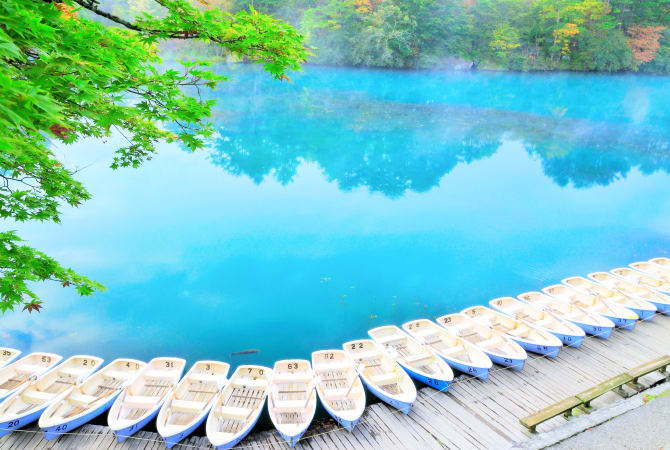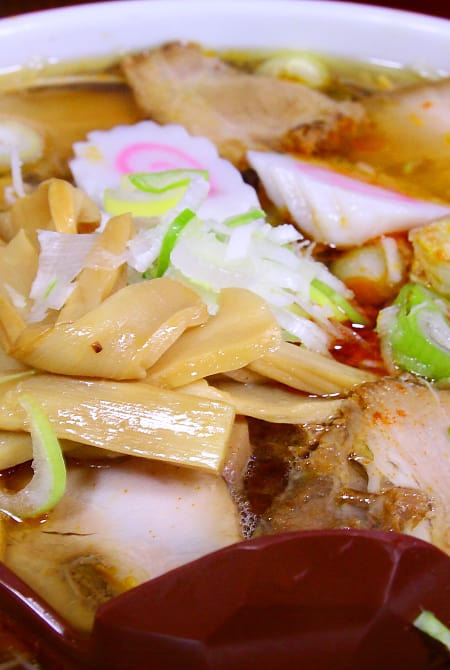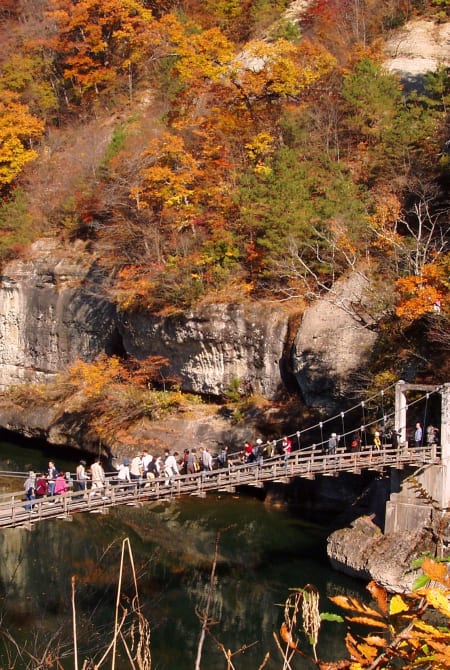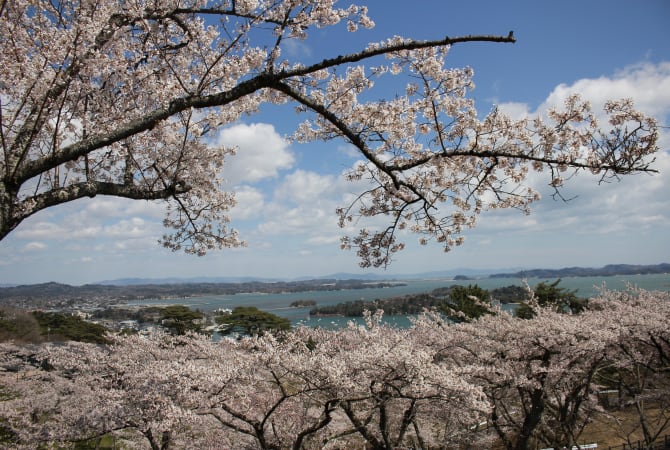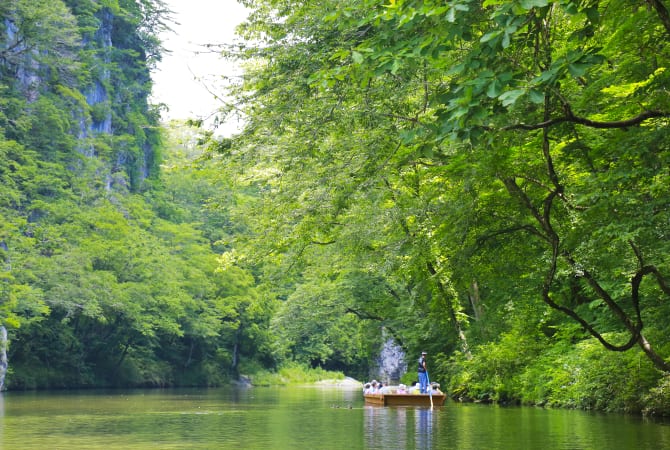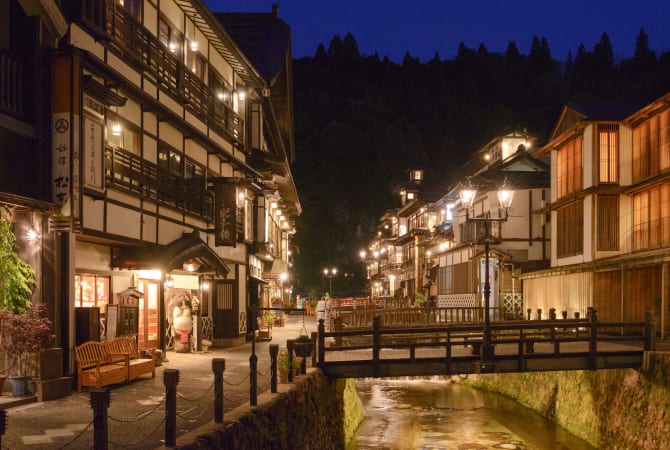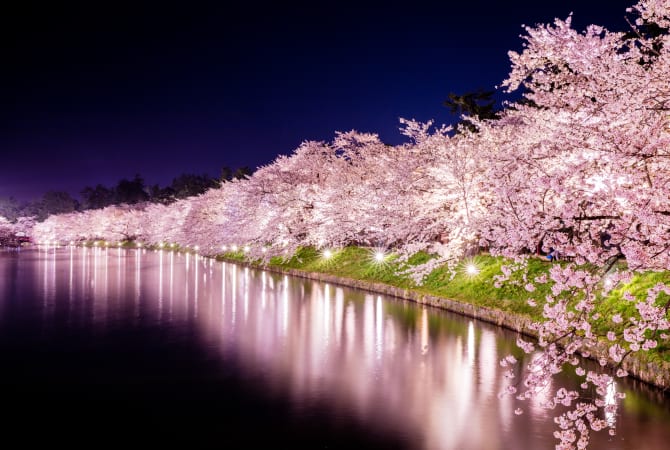
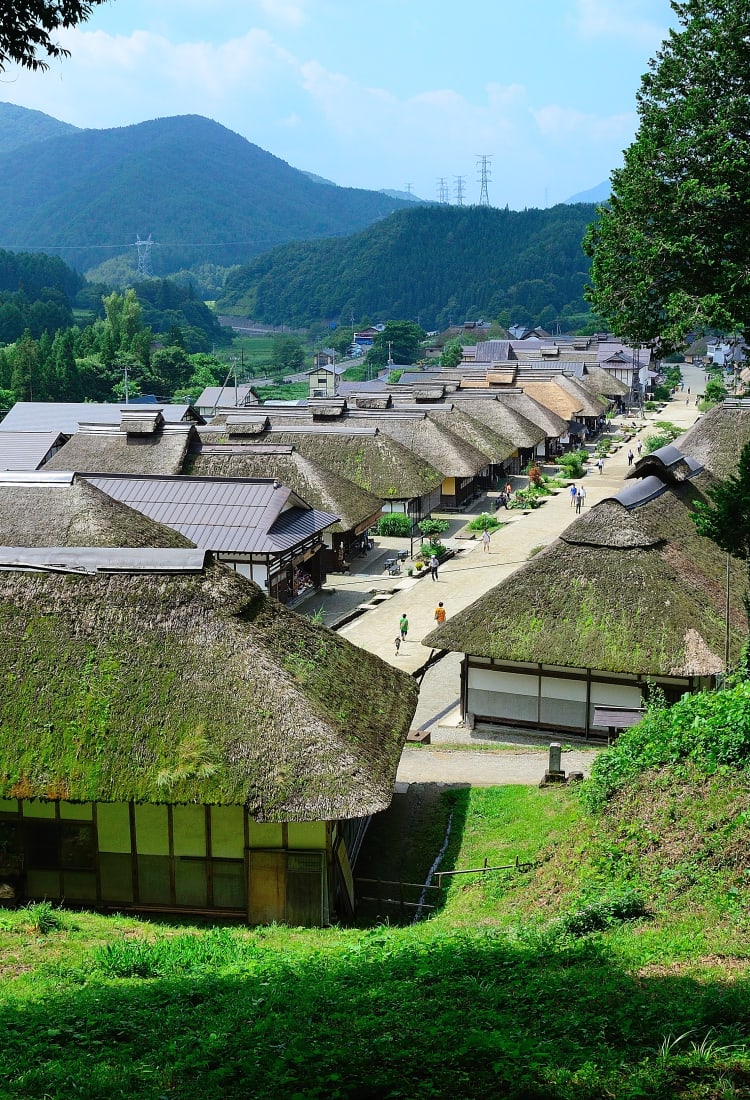
Tohoku Fukushima Samurai, Schnee und Sake: Japans Seele in einer einzigen Region
Fukushima ist von Tokyo aus leicht zu erreichen und bietet alles, wofür Japan berühmt ist: entspannende Onsen, Sake, Kirschblüten und schneebedeckte Berghänge
Dank der Pflege einer einzigartigen Nahrungsmittel- und Kulturtradition bringt das fruchtbare Land von Fukushima einige der besten Früchte und Sake Japans hervor. Natur gibt es hier im Überfluss und internationale sowie einheimische Besucher zieht es schon lange zu den berühmten Onsen und der unberührten Wildnis. Vor Kurzem haben auch Wintersportler den Charme von Fukushima entdeckt. Das Erdbeben und der Tsunami haben die Region im Jahr 2011 schwer getroffen, aber der Geist der Samurai-Kultur in den westlichen Regionen Fukushima und Aizu sowie eine Haltung der Beharrlichkeit und Entschlossenheit haben dazu beigetragen, dass sich die Tourismusindustrie durch kontinuierliche Anstrengungen erholt hat.
Anfahrt
Fukushima ist von Tokyo aus leicht mit dem JR Tohoku Shinkansen sowie mit regulären JR-Zügen, Überlandbussen und dem Auto erreichbar. Wenn Sie aus südlicheren Gegenden kommen, etwa aus Kyoto, nehmen Sie den JR Tokaido Shinkansen nach Tokyo und steigen dort um. Der Flughafen von Fukushima ist das regionale Flughafenzentrum.
Fukushima liegt an der direkten JR-Verbindung von Tokyo und ist nur etwa anderthalb Stunden entfernt. Um andere Zielorte zu erreichen, etwa Aizuwakamatsu und das Ura-bandai-Gebiet einschließlich Inawashiro, steigen Sie in Koriyama in Regionalzüge oder Busse um. Die Weiterreise dauert etwa zweieinhalb Stunden. Vom Flughafen Fukushima werden Inlandsflüge nach Osaka und Sapporo (ANA und Ibex Airlines) angeboten.
Nicht verpassen
- Die aquamarinfarbenen Mineralseen von Goshikinuma
- Die perfekten Skigebiete in Ura-Bandai
- Geschichte und Kultur der Samurai in der mittelalterlichen Burgstadt Aizuwakamatsu
- Die berühmten Hula-Mädchen im Spa Hawaiians Resort von Iwaki, Japans erstem Themenpark
Sehenswürdigkeiten Fukushima nach Bereich
angesagte Attraktionen in Fukushima
Lokale Spezialitäten
-
Matsuba-Krabbe
Die köstliche und zarte Matsuba-Krabbe verdankt ihren reichen Geschmack dem kalten Wasser und einer planktonreichen Umgebung. Wenn Sie Krabben lieben, sollten Sie diese Spezialität unbedingt in Ihrem Speiseplan aufnehmen. Sie werden gedünstet, in einem Hot-Pot gekocht oder als Sushi zubereitet.

-
Aizu-Lackwaren
Aizu nuri geht bis auf das späte 14. Jahrhundert zurück. Dekorative Techniken und aufwändige Designs zeichnen diese Lackwaren aus. Die auffälligsten Muster sind geprägte, gravierte oder bemalte Motive.

-
Shirakawa-Ramen
Leicht zähe, gelockte, handgeknetete Nudeln, serviert in einer deftigen Brühe auf Sojabasis. Berichten zufolge wurde diese Art Nudeln zum ersten Mal in einem Ramen-Restaurant in Shirakawa während der Taisho-Ära (1912–1926) bekannt.

-
Kitakata-Ramen
Kitakata-Ramen sind berühmt für ihre fetten, welligen Nudeln, die in einer köstlichen Brühe auf Sojasoßenbasis und mit Einlagen aus gegrillten Schweinefleisch- und Bambusstücken serviert werden.

Saisonale Highlights
-
Frühjahr
Der neue Sake kommt zwischen Dezember und März auf den Markt. Fukushima ist die Heimat des berühmtesten Kirschbaums der Nation und bietet beste Möglichkeiten, um die Kirschblüte in Japan zu erleben.

-
Sommer
Im Sommer findet in Fukushima in der Region Soma (nördliche Pazifikküste) das Soma Nomai Pferdefest statt. Es ist eines der einzigartigen Feste des Landes. Saftige Pfirsiche und Kirschen locken Naschkatzen an, während andere hierher kommen, um zu wandern, zu surfen und am Strand zu liegen.

-
Herbst
Der Herbst in Fukushima ist ein farbenfrohes Ereignis, bei dem die Skyline von Bandai Azuma in Gold- und Rottönen leuchtet. Die Festzeit setzen sich fort, begleitet von einem üppigen Maß an saisonalen Delikatessen wie Birnen und Trauben.

-
Winter
Die Hänge des Bandai sind für Skifahrer und Snowboarder aufbereitet. In den nahe gelegenen Onsen können Sie sich nach einem Wintersporttag erholen. Die Feste zum Jahresende und die Festbeleuchtung erhellen Tag und Nacht.



















































